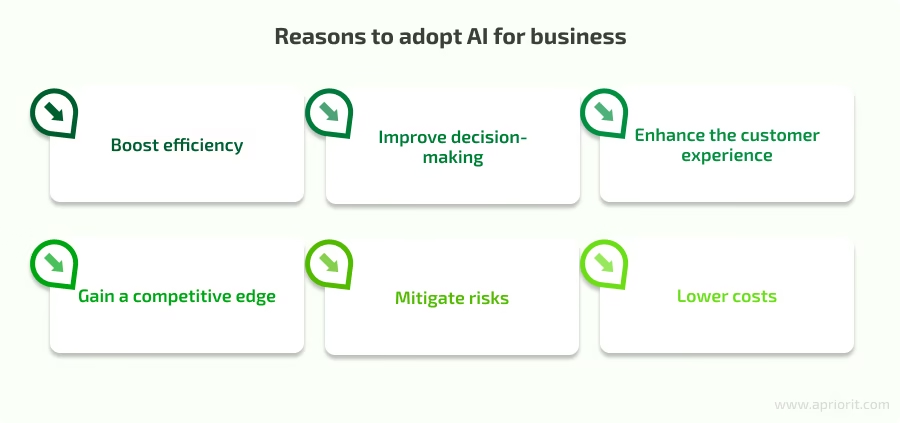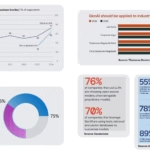AI Adoption Challenges and Solutions 2025: Navigating the Future of Business
Estimated reading time: 12 minutes
Key Takeaways
- The landscape of Artificial Intelligence is evolving at an unprecedented pace, with over 80% of organizations actively using or exploring AI in 2025.
- Significant **AI adoption trends 2025** include growth in logistics, healthcare, and banking, alongside the increasing focus on responsible AI and the rapid acceleration of **generative AI**.
- Organizations face numerous **AI implementation barriers**, including data quality issues, talent shortages, integration complexities with legacy systems, organizational resistance, cost justification, and security concerns.
- A strategic **enterprise AI strategy** is crucial, with over 75% of organizations lacking formal roadmaps, necessitating alignment with business objectives, phased implementation, and strong leadership buy-in.
- The **generative AI business impact** is profound, revolutionizing content creation, product innovation, and customer engagement, but requires careful integration into existing AI strategies.
- Successfully **scaling AI value** involves moving beyond pilots, implementing robust monitoring, demonstrating clear ROI, and embracing continuous improvement to overcome long-term challenges.
Table of contents
- Introduction
- The Evolving AI Landscape: Key AI Adoption Trends 2025
- Navigating the Minefield: Understanding AI Implementation Barriers
- Crafting Your Blueprint: Developing a Strategic Enterprise AI Strategy
- Unlocking Potential: The Transformative Generative AI Business Impact
- From Pilot to Scale: Strategies for Scaling AI Value and Maximizing ROI
- Conclusion
- Frequently Asked Questions
Introduction
The world is witnessing an unprecedented surge in Artificial Intelligence advancements, profoundly reshaping industries and presenting both urgent challenges and immense opportunities for businesses globally. Navigating this rapidly evolving terrain requires a clear understanding of the **AI adoption challenges and solutions 2025**. This post will delve into the critical aspects of AI adoption, exploring prevalent **AI adoption trends 2025**, identifying common **AI implementation barriers**, and guiding organizations on how to build a robust **enterprise AI strategy**. Furthermore, we will highlight the significant **generative AI business impact** that businesses are increasingly beginning to realize. The rapid evolution of AI exerts considerable pressure on organizations, and many are encountering obstacles in their adoption journey. Understanding these challenges is the first step towards harnessing AI’s full potential.
The Evolving AI Landscape: Key AI Adoption Trends 2025
In 2025, the integration of AI into business operations is no longer a futuristic concept but a present-day reality. Current statistics reveal that over 80% of organizations are actively utilizing AI or are in the process of exploring its potential. This widespread adoption directly reflects the key **AI adoption trends 2025**.
Several sectors are at the forefront of AI-driven transformation. In logistics, AI is revolutionizing operations through autonomous route planning and predictive maintenance. The healthcare industry is experiencing significant growth with AI-augmented diagnostics and personalized patient care solutions. Banking institutions are leveraging AI for sophisticated fraud detection, risk assessment, and the development of sovereign data models that ensure data privacy and compliance.

The role of AI has evolved dramatically from simple automation. Today, AI is a strategic partner, instrumental in driving decision-making, optimizing complex processes, and fostering groundbreaking innovation. As AI becomes more embedded in business functions, the emphasis on “responsible AI” has grown exponentially. This encompasses robust AI governance frameworks, ethical considerations in AI development and deployment, and adherence to increasingly stringent regulatory compliance. These elements are now integral to successful **AI adoption trends 2025**.
A particularly noteworthy trend is the rapid acceleration of **generative AI** adoption. This powerful subset of AI is transforming how businesses create content, design products, and engage with their customers, opening up new avenues for creativity and efficiency. The insights from sources like Stack AI and Deloitte highlight these shifts, emphasizing the widespread adoption, growth sectors, and the critical importance of responsible AI. Furthermore, trends from Coherent Solutions and Luckie underscore the accelerating generative AI adoption and the need for governance. AI’s impact extends even to everyday devices, as explored in Penbrief, demonstrating its pervasive influence. The transformative power of AI is reshaping the world, as detailed in Penbrief and Penbrief, with new innovations emerging constantly, as seen in Penbrief and Penbrief.
Navigating the Minefield: Understanding AI Implementation Barriers
Despite the compelling advantages of AI, organizations frequently encounter significant **AI implementation barriers** that impede successful adoption. A deep dive into these obstacles is crucial for developing effective strategies.
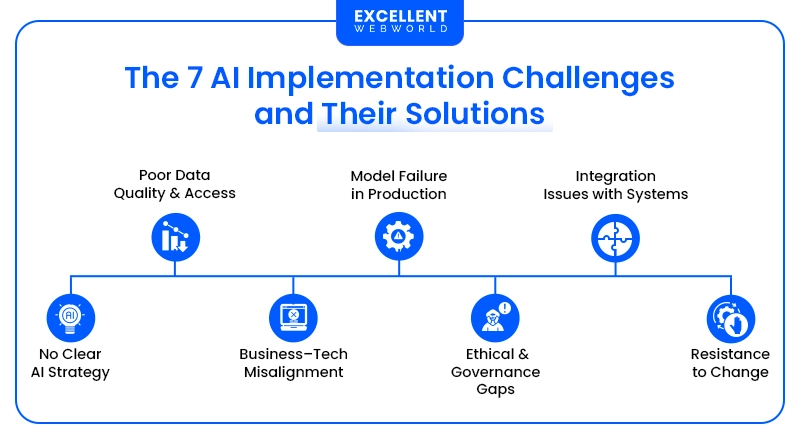
* **Data Quality and Availability**: A foundational challenge is the reliance on data. Poor data quality, data silos, and a lack of sufficient, relevant data can lead to unreliable AI outputs, skewed insights, and project delays. To overcome this, establishing robust data governance policies and consolidating disparate data sources are paramount. Stack AI and IBM highlight this as a primary concern.
* **Talent Shortage**: The demand for skilled AI professionals—data scientists, machine learning engineers, and AI ethics experts—far outstrips supply. This scarcity can make it difficult and expensive to build and maintain AI capabilities. Solutions include investing in upskilling and reskilling existing employees, fostering an AI-literate workforce, and strategically partnering with external AI service providers or adopting user-friendly, low-code AI platforms. Stack AI, Leobit, and Aptean provide insights into this challenge.
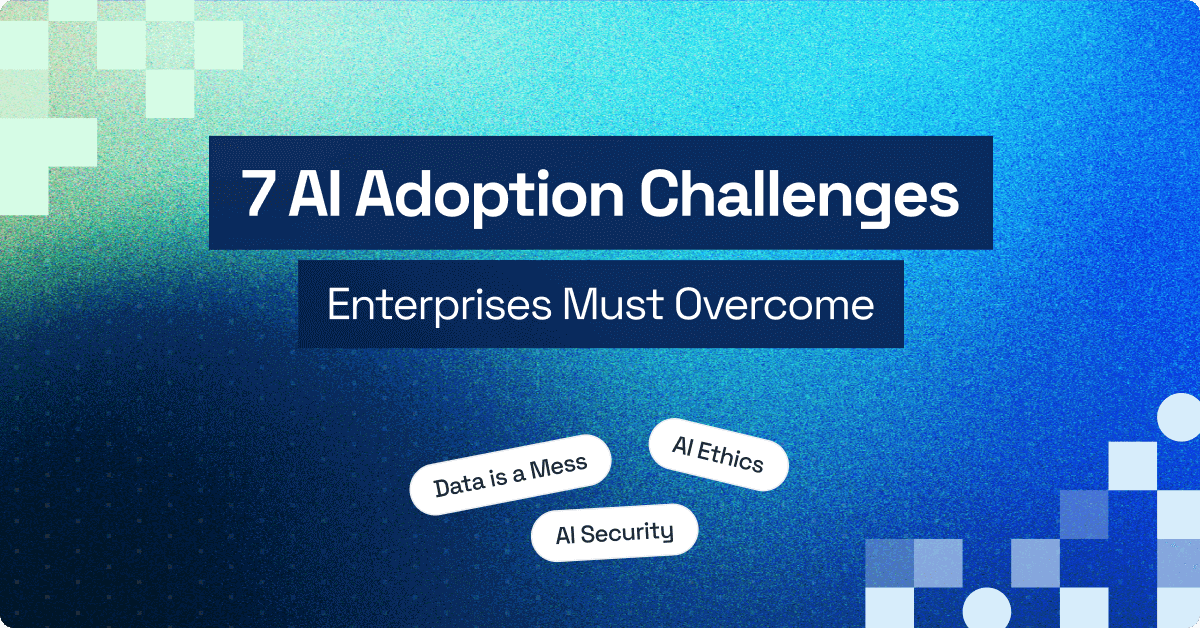
* **Integration with Legacy Systems**: Many organizations operate with complex, outdated IT infrastructures. Integrating cutting-edge AI solutions with these legacy systems can be technically challenging, impacting scalability, performance, and the overall return on investment. Modernizing IT infrastructure or leveraging AI platforms designed for seamless integration are key strategies. Stack AI, Deloitte, and Aptean address this issue.
* **Organizational Resistance to Change**: Human factors play a significant role. Employees may fear job displacement, resist new workflows, or struggle to adapt to AI-driven processes. Overcoming this requires transparent communication about AI’s role and benefits, comprehensive training programs, and fostering a culture that embraces innovation. Engaging cross-functional teams in AI initiatives can also help build buy-in. Stack AI and Aptean offer strategies for change management.

* **Cost and ROI Justification**: Implementing AI can involve substantial upfront investment. Demonstrating a clear business value and a tangible return on investment (ROI) can be a significant hurdle, especially for innovative or experimental projects. Identifying “quick win” use cases, focusing on AI applications that directly impact key performance indicators (KPIs), and meticulously tracking project outcomes are essential for securing ongoing support and funding. Stack AI and Luckie provide guidance here.
* **Security and Privacy Concerns**: With AI often processing vast amounts of sensitive data, ensuring robust security measures and strict adherence to privacy regulations is paramount. Organizations must address data handling, compliance requirements (like GDPR or CCPA), and model transparency, particularly in regulated industries. Implementing strong cybersecurity practices is non-negotiable. Stack AI, Deloitte, and IBM emphasize the importance of security and privacy.
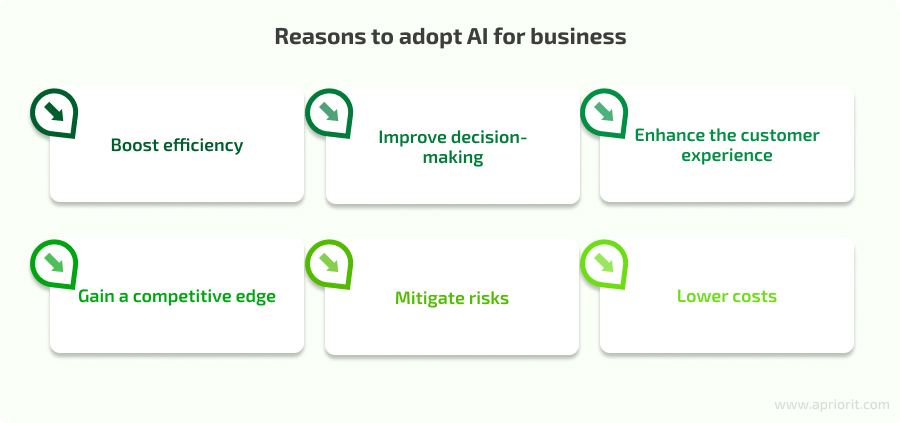
Addressing these barriers is key to unlocking AI’s potential. The crucial nature of navigating these challenges in enterprise AI adoption is underscored by resources like Penbrief. For a broader perspective on critical AI challenges, Penbrief is insightful. In the realm of security, Penbrief and Penbrief offer valuable advice, while Penbrief focuses on AI cloud security.
Crafting Your Blueprint: Developing a Strategic Enterprise AI Strategy
In the dynamic AI landscape, a well-defined **enterprise AI strategy** is not a luxury but a necessity. Alarmingly, over 75% of organizations currently lack a formal AI roadmap, dedicated AI council, or comprehensive ethical guidelines. This gap highlights the urgent need for structured planning to effectively leverage AI.

The cornerstone of any successful **enterprise AI strategy** is aligning all AI initiatives with core business objectives. This ensures that AI investments are not made in a vacuum but directly contribute to achieving organizational goals, driving measurable outcomes that guide everything from tool selection to project prioritization. As emphasized by Stack AI and Luckie, this alignment is critical for ROI.
A phased approach to AI implementation is highly recommended. Starting with pilot programs in areas that offer high impact but relatively low risk allows organizations to learn, iterate, and build confidence. Successful pilots can then be scaled through clear roadmaps that incorporate feedback loops for continuous improvement. This iterative process, supported by Stack AI and Aptean, mitigates risk and ensures sustainable growth.
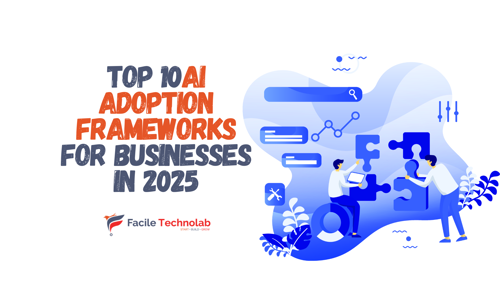
Effective leadership buy-in and robust change management are also critical components. Active executive involvement, the formation of AI councils to oversee strategy and ethics, and ongoing training programs are essential for fostering widespread organizational adoption and overcoming resistance. Stack AI and Luckie stress the importance of leadership.
Crucially, a strategic plan directly addresses and helps mitigate the **AI implementation barriers** previously discussed. By proactively planning for talent development (upskilling), investing in integration platforms, and forming cross-functional task forces, organizations can lay the groundwork for overcoming these hurdles. Stack AI and Aptean reinforce how strategic planning helps overcome barriers.
Developing a comprehensive strategy is paramount for successful AI integration. Resources such as Penbrief offer insights into **enterprise AI adoption trends 2025**. For a guide on how AI is transforming businesses, Penbrief is valuable. Navigating crucial enterprise AI adoption challenges is also covered by Penbrief. Furthermore, understanding the impact of AI on digital transformation strategies is provided by Penbrief, and strategies for managing AI adoption challenges are detailed in Penbrief.
Unlocking Potential: The Transformative Generative AI Business Impact
The transformative power of **generative AI** is becoming increasingly evident, creating significant **generative AI business impact** across various sectors. This advanced form of AI is revolutionizing how businesses operate, innovate, and engage with their markets.

The impact is felt most acutely in areas such as content creation, where generative AI can produce marketing copy, articles, and creative assets at unprecedented speed and scale. It is also driving product innovation by enabling faster prototyping and the generation of novel design concepts. In marketing, generative AI facilitates hyper-personalized customer experiences, tailoring communications and offers to individual preferences. Furthermore, it is automating complex workflows, freeing up human capital for more strategic tasks. Sources like Stack AI and Coherent Solutions highlight these transformative capabilities.
Concrete examples abound across industries. In media and publishing, generative AI accelerates content turnaround times, allowing for more frequent and varied output. Retailers are leveraging it to scale personalized customer engagement, offering unique shopping experiences to a wider audience. In manufacturing, generative AI speeds up the development of prototypes and product designs, shortening the time to market.

Integrating **generative AI** into an overall **enterprise AI strategy** requires careful consideration. It is crucial to identify use cases that align directly with core business priorities and ensure that robust governance and ethical practices are in place to manage its deployment responsibly. As noted by Stack AI and Luckie, strategic alignment and governance are key to harnessing generative AI’s potential effectively.
The profound influence of generative AI is a key trend to watch. Penbrief explores how it’s changing creative work, while Penbrief looks at future trends. For marketing applications, Penbrief provides insights. The broader impact of AI innovations is discussed in Penbrief, and game-changing marketing tools are highlighted by Penbrief.
From Pilot to Scale: Strategies for Scaling AI Value and Maximizing ROI
Transitioning from successful AI pilot projects to widespread adoption and **scaling AI value** across broader business units is a critical phase for organizations. This stage requires deliberate strategies to ensure sustained success and maximize the return on AI investments.
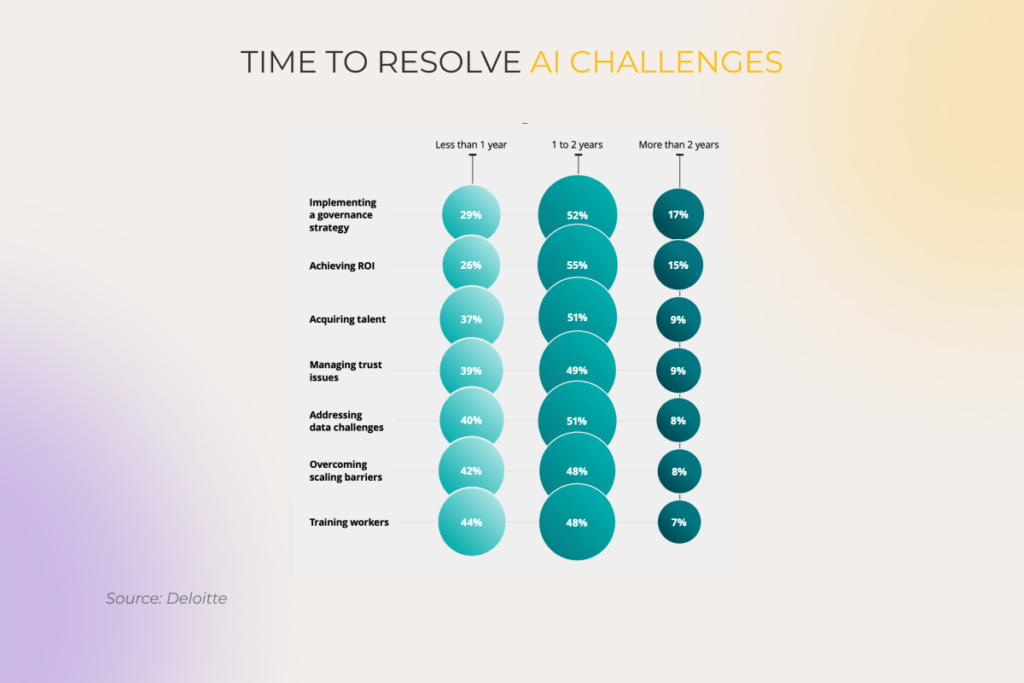
A fundamental aspect of scaling is the implementation of automated monitoring and performance tracking systems. These systems are essential for managing complex, scaled AI solutions, identifying potential issues early, and ensuring that AI models continue to perform optimally in real-world conditions.
Demonstrating and tracking ROI is paramount for justifying continued investment and supporting the goal of **scaling AI value**. This involves establishing clear metrics such as quantifiable cost savings, measurable revenue growth, and significant efficiency improvements. As highlighted by Stack AI and Luckie, rigorous ROI tracking is non-negotiable for long-term AI success.
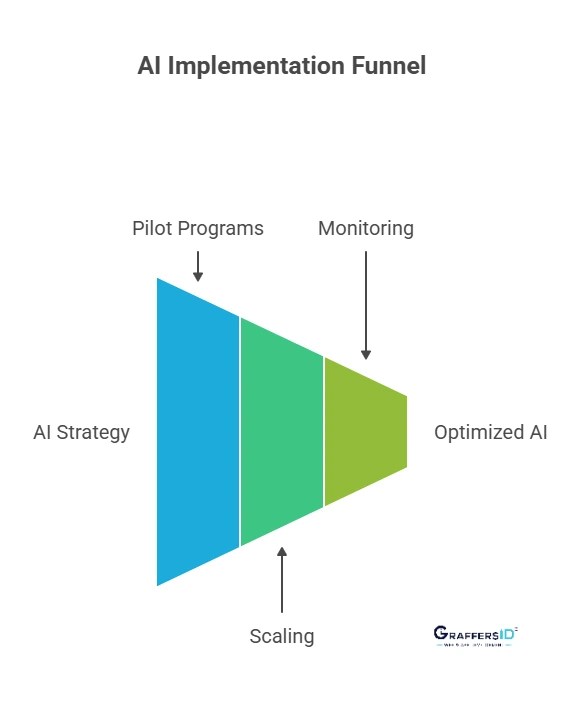
The AI field is characterized by continuous evolution. Therefore, organizations must embrace a culture of continuous improvement. This means actively iterating based on user feedback, staying abreast of technological advancements, and adapting AI strategies to evolving business needs. This dynamic approach, supported by insights from McKinsey and Stack AI, is crucial for maintaining a competitive edge.

Ultimately, these scaling strategies directly contribute to overcoming long-term **AI implementation barriers**. By building scalable infrastructure, focusing on measurable outcomes, and fostering a culture of adaptability, organizations can ensure that their AI initiatives deliver lasting value.
Strategies for scaling AI impact are crucial for sustained growth. Penbrief explores mastering AI’s impact on digital transformation. The influence of AI on business operations is detailed in Penbrief. For enterprise AI adoption challenges in 2025, Penbrief offers relevant information. Top AI trends for 2025 are covered by Penbrief, and the broader impact of AI on businesses is discussed in Penbrief.
Conclusion
As we navigate the complexities of **AI adoption challenges and solutions 2025**, it is clear that strategic foresight and pragmatic execution are paramount. The core message reinforced throughout this post is that while AI presents formidable obstacles, they are surmountable with the right approach. A well-defined **enterprise AI strategy** serves as the indispensable foundation for navigating the intricate AI landscape effectively. By proactively addressing **AI implementation barriers**, investing diligently in talent and robust governance, and strategically leveraging the profound **generative AI business impact**, businesses can systematically focus on **scaling AI value**. The transformative potential of AI is immense; by confronting challenges with strategic planning and diligent execution, organizations can effectively position themselves for enduring success in the future.

Frequently Asked Questions
What are the biggest AI adoption challenges in 2025?
The biggest AI adoption challenges in 2025 include data quality and availability, a shortage of skilled AI talent, integration complexities with legacy systems, organizational resistance to change, the difficulty of justifying AI costs and ROI, and critical security and privacy concerns.
How can organizations overcome AI implementation barriers?
Overcoming these barriers involves establishing robust data governance, investing in talent development and upskilling, modernizing IT infrastructure, implementing strong change management and communication strategies, focusing on clear ROI demonstration with defined KPIs, and prioritizing AI security and privacy from the outset.
Why is a strategic enterprise AI strategy important?
A strategic enterprise AI strategy is crucial because it aligns AI initiatives with core business objectives, provides a roadmap for phased implementation, ensures leadership buy-in, and helps to proactively mitigate the various AI implementation barriers. Over 75% of organizations lack such a formal strategy, highlighting its importance.
What is the business impact of generative AI?
Generative AI has a significant business impact by revolutionizing content creation, driving product innovation, enabling hyper-personalized marketing, and automating complex workflows. It leads to faster content turnaround, scaled customer engagement, and accelerated development cycles.
How can businesses scale AI value effectively?
To scale AI value, businesses must move beyond pilot programs by implementing automated monitoring systems, rigorously tracking and demonstrating ROI with clear metrics, and fostering a culture of continuous improvement and adaptation to new technological advancements and evolving business needs.
What are the key AI adoption trends for 2025?
Key AI adoption trends for 2025 include widespread organizational adoption (over 80%), significant growth in sectors like logistics, healthcare, and banking, an increasing focus on responsible AI and governance, and the rapid acceleration of generative AI adoption.
How does AI impact digital transformation strategies?
AI significantly impacts digital transformation by enabling new business models, automating processes, enhancing customer experiences, and driving innovation. Integrating AI strategically is essential for businesses aiming for comprehensive digital transformation.
What role does leadership play in AI adoption?
Leadership plays a pivotal role in AI adoption by championing initiatives, securing necessary resources, fostering a culture that embraces AI, and actively participating in AI councils and governance. Executive buy-in is critical for overcoming organizational resistance and ensuring strategic alignment.
What are some examples of generative AI in action?
Examples of generative AI in action include creating marketing copy and social media content, designing product prototypes, generating personalized email campaigns, summarizing large documents, and assisting in code generation. These applications highlight the **generative AI business impact**.
Why is responsible AI development important?
Responsible AI development is crucial to ensure ethical deployment, prevent bias, maintain data privacy, adhere to regulations, and build trust with users and stakeholders. It encompasses AI governance, ethical frameworks, and transparency.
What is the importance of linking AI to KPIs?
Linking AI initiatives to Key Performance Indicators (KPIs) is vital for demonstrating business value and justifying investment. It ensures that AI projects are focused on achieving tangible, measurable business outcomes that contribute to overall organizational success.
How can organizations future-proof their AI strategies?
Organizations can future-proof their AI strategies by staying agile, investing in continuous learning and adaptation, building scalable and flexible AI infrastructures, prioritizing ethical considerations, and fostering a culture that embraces innovation and change in the rapidly evolving AI landscape.
What is the typical timeline for seeing ROI from AI investments?
The timeline for seeing ROI from AI investments can vary widely depending on the complexity of the project, the industry, and the effectiveness of the implementation strategy. Some “quick win” projects may show returns within months, while larger, more transformative initiatives might take one to three years to demonstrate significant ROI. Careful planning and continuous monitoring are key.
How can small and medium-sized businesses (SMBs) adopt AI?
SMBs can adopt AI by starting with off-the-shelf AI-powered tools for common tasks (e.g., CRM, marketing automation), focusing on specific pain points, leveraging cloud-based AI services, and exploring partnerships or consulting services to gain expertise without significant upfront infrastructure investment.
What are the ethical considerations for AI adoption?
Ethical considerations include ensuring fairness and avoiding bias in AI algorithms, protecting data privacy, maintaining transparency in AI decision-making, establishing accountability for AI actions, and considering the societal impact, such as job displacement. Responsible AI frameworks are essential.
How does AI contribute to business innovation?
AI drives business innovation by uncovering new insights from data, identifying unmet customer needs, enabling the development of novel products and services, optimizing business processes, and creating entirely new business models. Generative AI, in particular, is a significant catalyst for creative innovation.
What is the difference between AI adoption and AI implementation?
AI adoption refers to the overall process of integrating AI into an organization’s strategy and operations, including the decision to use AI and the cultural shift required. AI implementation focuses on the technical aspects of deploying AI solutions, such as data preparation, model building, and integration into existing systems.
How can AI improve customer experience?
AI can improve customer experience through personalized recommendations, faster and more efficient customer support (via chatbots and virtual assistants), predictive service, and tailored marketing communications. Generative AI further enhances this through hyper-personalized interactions.
What are the risks of *not* adopting AI?
The risks of not adopting AI include falling behind competitors in efficiency and innovation, losing market share to AI-savvy rivals, failing to meet evolving customer expectations for personalized and efficient services, and missing opportunities to optimize operations and reduce costs.
How important is continuous learning in AI adoption?
Continuous learning is exceptionally important in AI adoption because the field is rapidly evolving. Organizations must constantly update their knowledge, skills, and strategies to keep pace with new AI advancements, adapt to changing market dynamics, and ensure their AI solutions remain relevant and effective.


